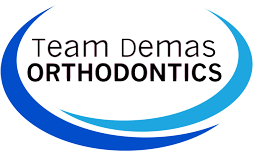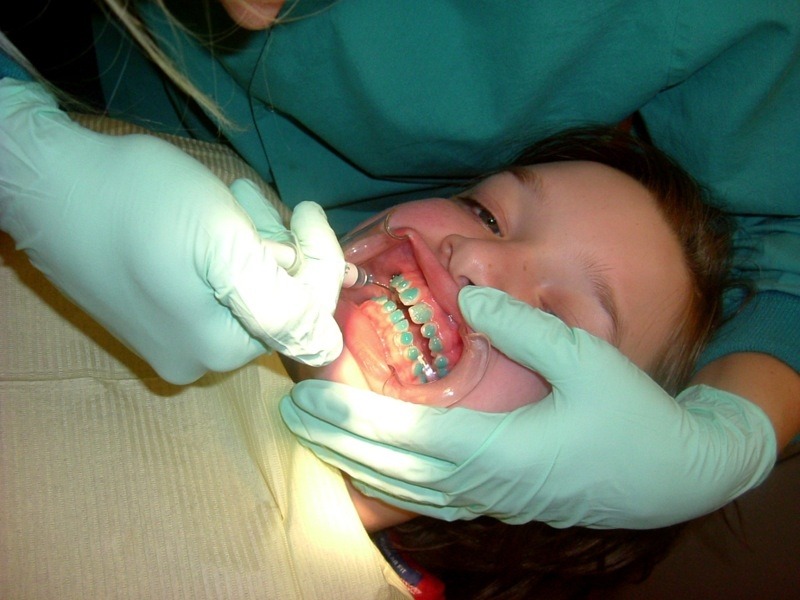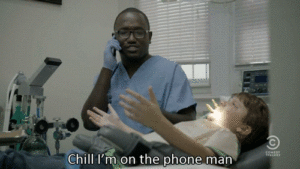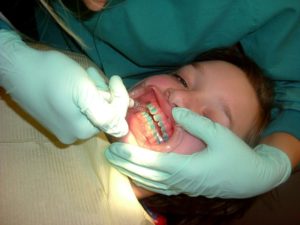In the history of dentistry, many different health professionals were involved in coming to the aid of patients suffering from a toothache or oral issue. As these professionals noticed a need for specialized work on the teeth, the focus on orthodontia began. Although both of these oral health professionals work with issues concerning the mouth, a dentist is not an orthodontist.
Schooling
General Degree
Both an orthodontist and a general dental professional are required to attend and graduate from high school with a general degree of knowledge. These studies must include the areas of science, biology, general and organic chemistry, statistics or calculus, and physics. In addition to the general high school degree, orthodontics experts are required to attend four years of college resulting in a bachelor’s degree. Exceptional students are often accepted to the dental program after only three years of college experience.
Dental Admissions Testing
Once the student has earned their degree from college, it is necessary for them to take the DAT test (Dental Admissions Test). The fierce competitiveness of this field has prompted the American Dental Association to advise students to take this test a year in advance of their submissions to enter post-graduate classes. The admission to one of these schools is weighed heavily on criteria such as research, Dental Admissions Test scores, Grade Point Average, participation in extracurricular activities, community services, and personal and professional recommendation letters.
Dental License
To earn a dental license, students who practice orthodontic treatment then have to attend and graduate from a dental school. After their completion of this training school, to become an orthodontist the student must partake in an additional four years of hands-on training. The study of orthodontia goes even deeper into studies and real life practices than the general degree of a dental professional.
Resident Orthodontist
To achieve the title of an orthodontist, it is necessary for a student to complete their college courses in general dentistry. Once they have earned their DDS, DMD, BDS, or an equivalent degree, a student can be enrolled in the highly competitive orthodontics program as a resident. These training courses generally last from two to three years and can result in a Doctor of Science degree or a Master of Science degree. The differentiation of these two achievements is reflective of the research requirements of each individual, specialized career choice, and the institution’s graduation requirements.
Written Testing
After achieving this certification, the Orthodontics students still have a written test ahead. This test is a requirement of the American Board of Orthodontics (ABO). Students must pass this test with the minimum requirements in order to achieve a graduate status. Once the student passes this test, they can then choose to enter into a general dental practice or continue their specialized training to become an Orthodontist.
Team Demas Orthodontics || Southington, CT
Post Graduate Work
Choosing the Specialty
The degrees of Doctor of Science or Master of Science are required for advancement in the more specialized fields of dental health. Each of these individual training programs is equal to degrees, but each has its own criteria and requirements that will alter the amount of time that it takes for a person to graduate as an orthodontist. Because of the specialty of this field, it is required that the student practicing face the ABO (American Board of Orthodontics) examiners as a condition to graduating.
Presenting Casework to ABO
Aspiring orthodontists present six patient cases that they have personally overseen from diagnosis to removal. They explain their decisions for the treatment path that they took for each individual case. The panel then makes the decision to certify or deny certification to the practicing orthodontist. For the students who pass this testing, they are awarded the title “Diplomate, American Board of Orthodontics.”
Specialized Care
The practice of orthodontics involves the placement and securing of wires on the surface of the teeth and gradually tightening them in order to gradually move teeth to new preferred positions. This type of specialized mouth treatment is often used in cases of physical problems such as an overbite, underbite, teeth grinding, jaw issues, repairs from accidents, or other physical issues concerning oral health. The use of braces on teeth by a qualified orthodontist will straighten out issues that a dentist is not qualified to deal with.
General Dental Duties
Traditional general practicing dental professionals focus their attention on things that involve the health of the mouth concerning disease and germs. General dentistry involves the cleaning of the teeth with specialized tools to scrape and remove tartar build-up. This area of dental health also involves the diagnosis and treatment of cavities. These procedures involve x-rays, fillings, and crowns.
To partake in more detailed oral health, a dentist is required to attend additional schooling and certification. A dental associate practicing general dentistry is trained to notice the signs of the need for braces in their patients. Once the general dentistry of the patient has been taken care of, a dentist may suggest an orthodontic treatment further the treatment of the mouth. This may be the result of many different oral issues including the straightening of the teeth.
General Orthodontia Duties
Working with and for the dentist, an orthodontist examines the patient and then offers a plan to install the type of braces the patient requires. This plan involves the installation of the braces, regular appointments for tightening, and the continuing of regular dental hygiene checks. Your Orthodontist will also give specific instructions to the care of the braces and the types of food which the patient is not allowed to eat with braces.
It is true that a dentist and an orthodontist both deal with issues concerning the teeth and mouth. However, when it comes to the cosmetic aspects of a patient’s smile, experts of Orthodontics have the skill and expertise to deliver the highest quality orthodontic treatment. A dentist may be able to clean and shine your teeth, but an Orthodontist can align your smile and eliminate your crooked look. Give them a call today to schedule your “smile solution.”
Team Demas Orthodontics
27 Meriden Ave #2a, Southington, CT 06489, USA
Phone: 860-276-0333





